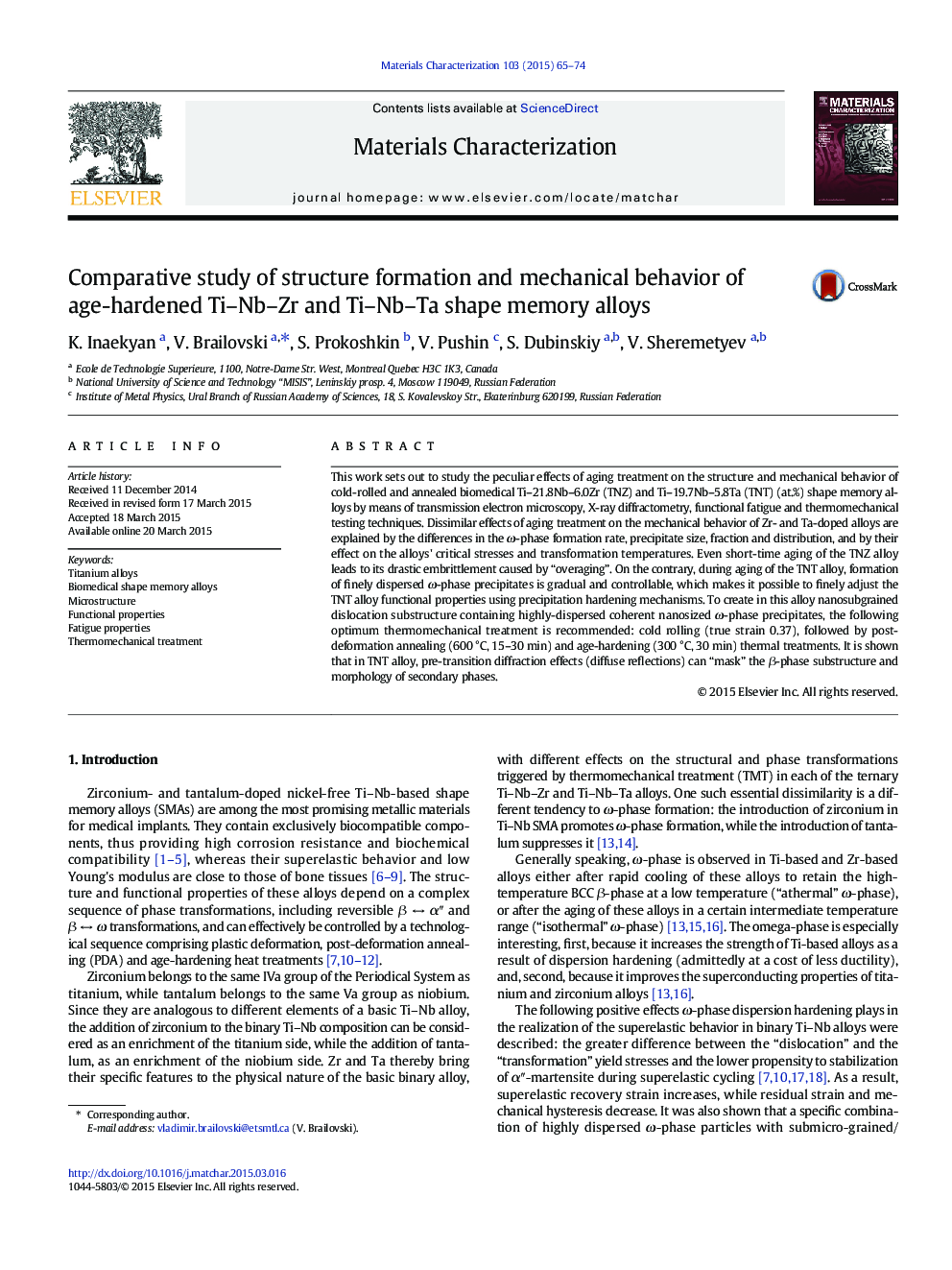| کد مقاله | کد نشریه | سال انتشار | مقاله انگلیسی | نسخه تمام متن |
|---|---|---|---|---|
| 1570875 | 1514384 | 2015 | 10 صفحه PDF | دانلود رایگان |

• TNZ alloy is characterized by much higher ω-phase precipitation rate than TNT alloy.
• Difference in precipitation rates is linked to the difference in Zr and Ta diffusion mobility.
• Aging of nanosubgrained TNZ alloy worsens its properties irrespective of the aging time.
• Aging time of nanosubgrained TNT alloy can be optimized to improve its properties.
This work sets out to study the peculiar effects of aging treatment on the structure and mechanical behavior of cold-rolled and annealed biomedical Ti–21.8Nb–6.0Zr (TNZ) and Ti–19.7Nb–5.8Ta (TNT) (at.%) shape memory alloys by means of transmission electron microscopy, X-ray diffractometry, functional fatigue and thermomechanical testing techniques. Dissimilar effects of aging treatment on the mechanical behavior of Zr- and Ta-doped alloys are explained by the differences in the ω-phase formation rate, precipitate size, fraction and distribution, and by their effect on the alloys' critical stresses and transformation temperatures. Even short-time aging of the TNZ alloy leads to its drastic embrittlement caused by “overaging”. On the contrary, during aging of the TNT alloy, formation of finely dispersed ω-phase precipitates is gradual and controllable, which makes it possible to finely adjust the TNT alloy functional properties using precipitation hardening mechanisms. To create in this alloy nanosubgrained dislocation substructure containing highly-dispersed coherent nanosized ω-phase precipitates, the following optimum thermomechanical treatment is recommended: cold rolling (true strain 0.37), followed by post-deformation annealing (600 °C, 15–30 min) and age-hardening (300 °C, 30 min) thermal treatments. It is shown that in TNT alloy, pre-transition diffraction effects (diffuse reflections) can “mask” the β-phase substructure and morphology of secondary phases.
Journal: Materials Characterization - Volume 103, May 2015, Pages 65–74